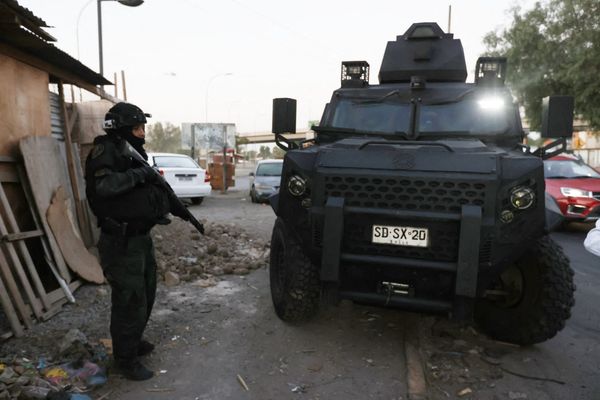Realme has launched the Realme 8 Pro, a sub £300 mid-range smartphone that delivers one of the first handsets at this price point with a 1080 megapixel camera. Let’s take a look at three areas where Realme hopes its new handset stands out; the camera, the processor, and the user interface.
Camera
The Realme 8 Pro packs in four rear cameras; a 108 megapixel main camera, an 8 megapixel ultrawide camera, a two megapixel monochrome camera, and a 2 megapixel macro camera. Four cameras certainly allows the 8 Pro to look the part, even if we’ve got a camera island where the four cameras actually rise up from the island itself.
The big talking point is, of course, the 108 megapixel lens, built around the Samsung HM2 Sensor. The Realme 8 Pro is essentially built around this main camera and it delivers on the promise. The vibrancy and saturation of the colours are boosted, which gives the images a much warmer feeling, but you’ll need to dial it back a bit if you are looking for natural colours.
Given the price of the Realme 8 Pro (£279 for the base model here in the UK), this is going to be one of most attractive options for those that are putting the camera top of their desired features.
Realme also offer a number of styles that can be used by the camera directly. Tilt Shift photograph allows some incredibly artistic events beyond the ‘oh you can make things look like a model village’, the effects are much easier to asses doing while taking the picture rather than in post.
Realme has also improved its ‘Starry’ mode to get a better view of the night sky.The option to create a time-laps video has also been added – naturally you’ll need a tripod to keep the camera steady, with an hour of running providing 8 seconds of footage at 30 fps. It certainly shows off the prowess of the computing power and imaging process in the handset, but I’m struggling to see how often this would be used.
What it does do is use the technology used in the Nightscape view – which is currently in its fifth generation. Samsung’s sensors offers a number of hardware and software features (ISOCELL Plus, Smart-ISO, and pixel binning) and the Nightscape software sits on top of this to capture better images.
Surely the biggest news in the specs is the inclusion of a 3.5mm headphone jack? Along with the ability to run two physical SIM cards and an SD card, there’s a feeling that the physical options stripped away by flagship handsets are still important for many.
No, the real win is in the balance of hardware that Realme has decided on for the 8 Pro. The priority has been on the graphics. The SnapDragon 720G gives this mid-range handset more than enough power to handle the day to day smartphone tasks with ease but the increased GPU performance compared to the previous iteration (some 75 percent according to Realme) is going to be clearly noticed by the gamers; but it also allows for smoother transitions and animations in the UI.
One area where there is a touch of lag is in image processing – handling the data from the 108 megapixel sensor takes a small but noticeable amount of time.
Realme’s faster charging system is called SuperDart Charge, and the Realme 8 Pro will rapid charge at 50watts. In practice that means the 4500 mAh battery can go from flat to 100 percent in 47 minutes, and flat to 50 percent takes a shade under twenty minutes. The handset passes the ‘can you use it for a day with ‘real world’ mixed usage’ rule of thumb that I have; but it won’t make it into day two – which of course lies behind the rise of rapid charging.
So its unfortunate that the SuperDart charger does not come in the box – instead you have a regular 65w
Finally there’s the update to the aforementioned user interface. Unsurprisingly Realme has it’s own flavor of Android, the self-titled Realme UI. Version 2 has seen a a number of test builds and beta versions for the community, but the Realme 8 Pro will be the first of its handsets to include v2.0 out of the box.
It leans heavily into customisations, best illustrated by its approach to ‘dark mode’. This isn’t a binary on/off option. It has three settings of [reverse] intensity. You have three different choices (labelled enhanced, medium, and gentle); as well as individual options for tweaking the wallpapers, icons, and contrast levels.
Realme has over 100 options that can be set by the user. That sound pretty daunting, but they are all grouped well in the settings and with solid choices made for the default options you can play around as you live with the handset to reach something that works well for you.
Priced at £279, the Realme 8 Pro has a lot of potential. The headline 108 megapixel main camera is clearly one of them, but it also brings a good balance of performance to this price point. While that rear camera island looks a touch awkward to me, it does give the handset something recognisable at the rear. I’m less enamoured with the ‘Dare To Dream’ slogan that leaps out of the glass for all to see, but that’s a matter of taste.
The Realme 8 Pro is a competent handset that delivers a great camera experience and a smooth interface at its highly competitive price point.
Disclaimer: Realme provided a Realme 8 Pro for review purposes.







